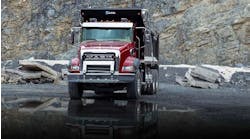Name: Marco Encinas
Title: Product manager of global platforms
Company: Teletrac Navman
“Our customers define asset tracking and how they apply it in their operations as knowing where vehicles or equipment are at any given time. But from our perspective, asset tracking is much more than that. Those using telematics or GPS tracking in their fleet have access to a wealth of knowledge beyond simply tracking the physical location of assets. For example, vehicle location data provides a strong base for fleets to optimize routing, making it more efficient and dynamic with the ability to locate a driver, monitor road conditions and communicate changes with the customer and driver at any second. From a customer service standpoint, real-time location data means fleets can quickly and efficiently communicate with shippers, tracking and monitoring for customer load ETAs, and reporting any delays in advance. This can improve delivery time and allow for more precise planning and forecasting into delivery windows, on-time delivery percentages or missed delivery windows.”
How has asset tracking changed over the last few years?
“One of the things we’ve seen over the past few years is that while fleets have adopted telematics (in part due to the ELD mandate), they may not be using the technology to its full potential. Our 2018 Telematics Benchmark report found that while adoption is at an all-time high, most fleets are only beginning to scratch the surface of its potential. We’ve made it a goal to educate customers and clients on use cases of telematics well behind asset tracking, like using data to improve driver safety and behavior or improve fuel efficiency, as that’s how they’ll get the competitive advantages of telematics in addition to the compliance ones.”
Are there new security concerns that were not pertinent years ago?
“The ELD mandate certainly highlighted security concerns and increased conversations on data security. It’s a common misconception that ELDs or telematics systems are vulnerable to remote hacking, but one real concern should be the vulnerability of data (which contains information like employee names and CDL numbers) as it’s sent between the ELD, back office and FMCSA’s system. To address this concern, we’re seeing providers take steps to ensure the security of their data. Teletrac Navman, for example, was recently granted a Provisional Authority to Operate (P-ATP) by the Joint Authorization Board (JAB) as part of the Federal Risk and Authorization Program (FedRAMP) across our DIRECTOR platform.”
How else has your asset tracking changed over time?
“Teletrac Navman’s technology has completely evolved from when we first started the business. As an asset tracking pioneer, we began tracking via RF networks that we would build based on the markets our service was expanding into. From there, we added in-cab technology using devices with T9 keywords to facilitate communication between the drivers and back office. Now we offer an assortment of in-cab technology and workflow solutions aimed at improving business efficiency. As the technology has advanced, we’re now able to extract large volumes of data in real-time from each asset and across the entire fleet, which allows customers to make immediate, data-driven business decisions.”
What developments do you anticipate in the future or hope for? What would you like to see improved?
“With the upcoming transition deadline from AOBRDS to ELDs, I hope to see fleets becoming more comfortable with GPS tracking technology and taking advantage of the data it’s generating. As companies look to improve overall efficiency and safety, it’s the data from fleet management software or asset tracking solutions like telematics that will help gain a competitive advantage. Data is the key to digital transformation and using it to optimize routes or decrease fuel intake allows companies to explore different ways to operate their fleet in ways that might not have been available without telematics.”




